Test Bricks A, B, C, D and 8C
by Bayer for LEGO
Ingo Althofer, December 2013; newly formatted in September 2019.
Disclaimer: This brick washing experiment has not been
supported or authorized by the LEGO(TM) Group and
also not by the Bayer concern.
Back in the 1950's, LEGO bricks were made out of the plastic
Cellulose acetate (=CA). In the early 1960's, LEGO
contacted the German chemical concern Bayer with the request
to develop even better plastics for the bricks.
The result were LEGO bricks made from
Acrylonitrile butadiene styrene (=ABS). ABS was relatively
cheap and easy to process in injection molding.
It allows very narrow tolerances and is much more colorfast,
stable, and shockproof than CA.
In an early phase of the process, Bayer had developed four
different nuances of the new plastics, with short names
A, B, C, D.
Bricks of type A had the smallest clutch power,
B-Bricks were clamping somewhat better,
C-Bricks even more,
and D-Bricks had highest clutch power.
C-Bricks became the standard, and in forthcoming tests
for fine-tuning
bricks were made where not only one nub had a "C" on it
but all eight nubs of the 4x2 brick.
In the scene of collectors these bricks got the name 8C.
With a handfull of such Bayer bricks I made some "dry washing
experiments". In detail: I had five bricks each of the types
A, B, C, D, and 8C.
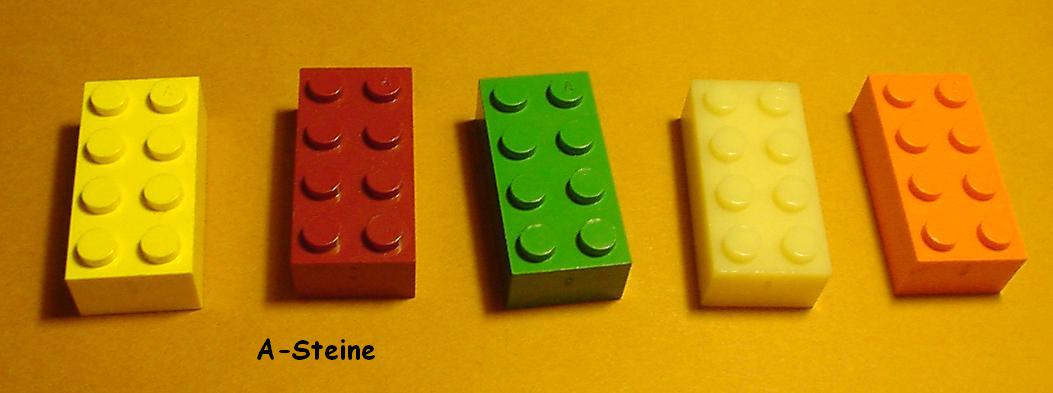
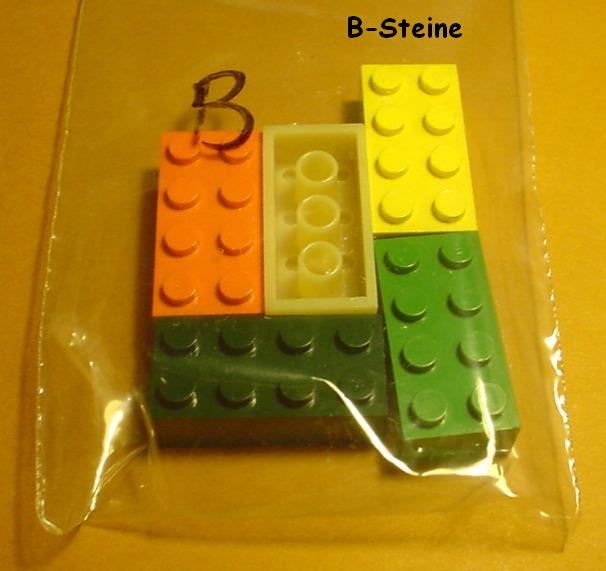



These altogether 25 bricks were mixed and put in a sock which was
knotted.

Then I "milled" the sock with my hands, without any use of water.
I did this with exactly 200 movements, which took in total sligthly
longer than two minutes.
Then I opened the sock again and controlled which complexes
had been built by which bricks. The next photo shows two
typical results.
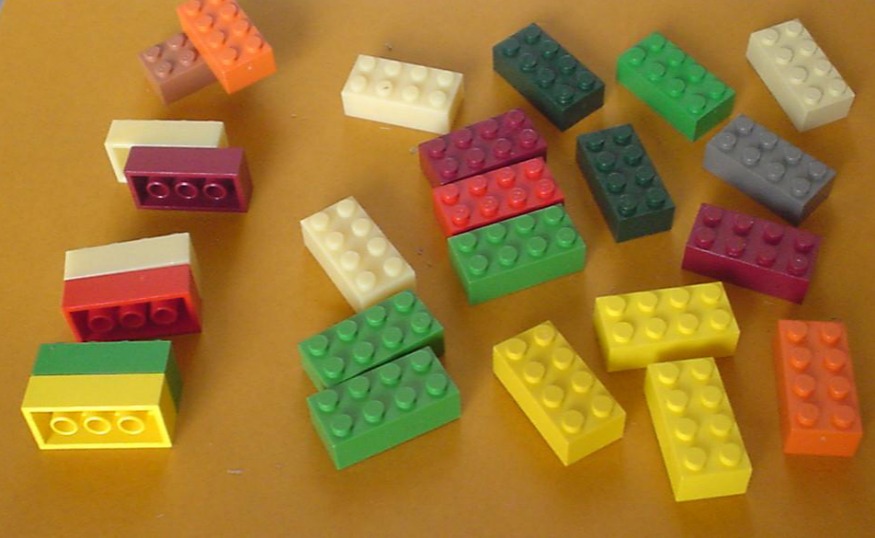
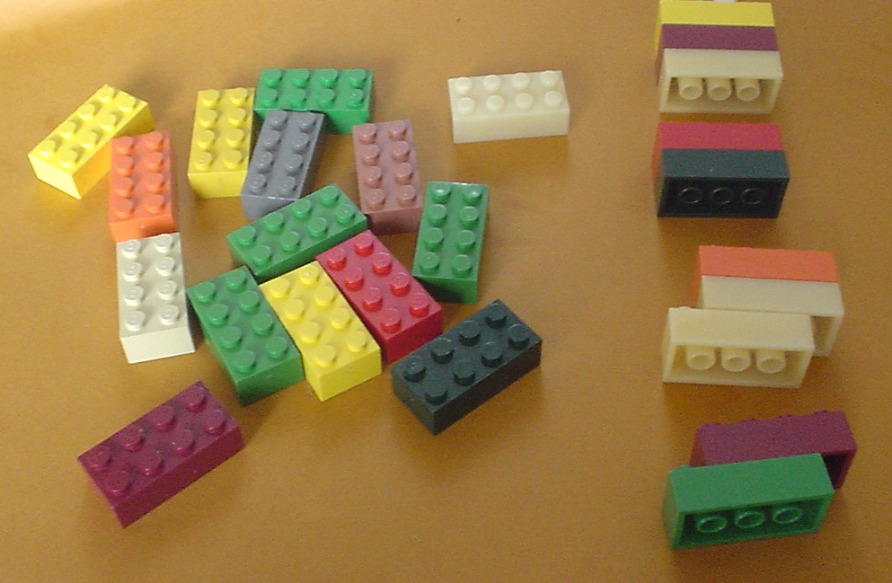
For each run I counted how many bricks of each type came out
as single bricks and how many as parts of complexes.
The total result after 12 runs was:
Type A 33 times in complexes,
Type B 29 times in complexes,
Type C 24 times in complexes,
Type 8C 22 times in complexes,
Type D 15 times in complexes.
Although this result is statistically not significant,
I read a tendency:
Bricks with smaller clutch power are more frequent
in complexes: A before B before C before 8C
brfore D.
This may sound surprising in the first moment, because
larger clutch power stands for better cohesion. But
larger clutch power also means that larger resistance
has to be overcome before two bricks assemble.
Thanks
Several people helped me before and during these experiments.
Michel Kroess from the Netherlands
has collected tons of information on Bayer bricks
in a web-log on test LEGO bricks.
Click here!
Garry Istok from the USA
gave hints on Michel's texts and photos
in the 1000steine forum.
Sebastian Kirst from the German AFoL scene
borrowed me some of his Bayer bricks for the
"washing experiments".
Thanks to all three of them.
Bayer's Pride
The Bayer company was proud to have found the ABS plastics
for LEGO, and they have all right to be.
On July 10, 1967 Bayer had a full-page advertisement
in the magazine "Der Spiegel":
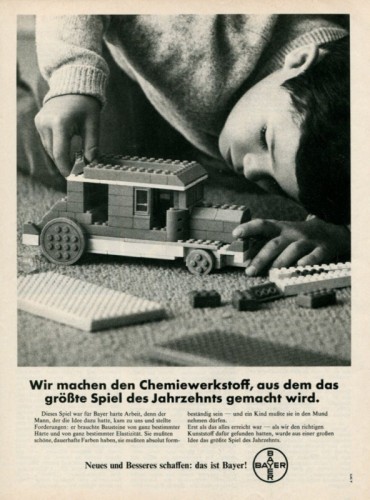
Back to my site with the washing links








